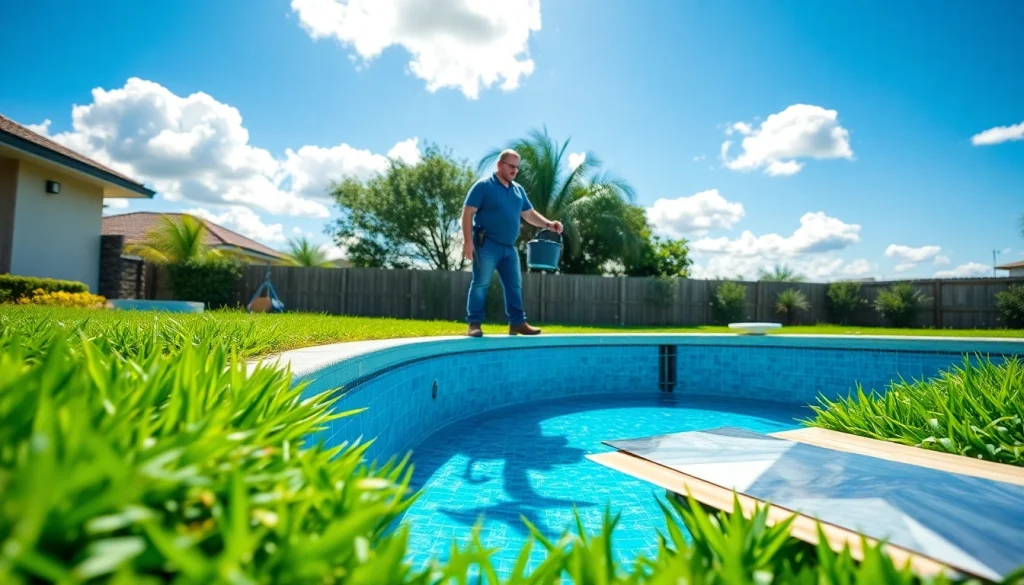Understanding Swimming Pool Installation Basics
Investing in a swimming pool can significantly enhance your outdoor living space, provide a relaxing retreat, and offer a great place for family and friends to gather. However, navigating the process of swimming pool installation can be daunting if you do not have a clear understanding of the basics. This guide will help you comprehend essential aspects — from types of pools available to the location and permits required for installation.
Types of Swimming Pools
When it comes to swimming pool installation, a fundamental factor is the type of pool you wish to have. The most common types are:
- Inground Pools: Typically made from materials such as concrete, fiberglass, or vinyl. They offer a permanent, aesthetically appealing option and can be customized to fit your yard’s design.
- Above Ground Pools: These are generally less expensive and easier to install. While they may not have the same visual appeal as inground pools, they can still provide a fun, affordable swimming solution.
- Semi-Inground Pools: These pools are partially above ground and partially dug into the ground, striking a balance between cost and aesthetics.
Choosing the Right Location for Your Pool
Location is crucial when planning for a swimming pool installation. Consider factors like:
- Sun Exposure: Ideally, your pool should receive sunlight for most of the day, which will help keep the water warm and comfortable.
- Wind Patterns: Ensure your pool area is somewhat sheltered from strong winds which can make the space less enjoyable.
- Drainage: Consider the natural drainage patterns of your yard to avoid water pooling around the pool.
- Access: Ensure that your pool is easily accessible from the house and has enough space for poolside furniture and activities.
Essential Permits and Regulations
Before you commence the installation of your pool, familiarize yourself with local regulations and obtain necessary permits. Typical requirements may include:
- Building permits that may dictate the size and depth of the pool.
- Safety barriers, often a requirement to prevent access to the pool by children without adult supervision.
- Electrical and plumbing permits for any additional features such as lighting or heating systems.
The Swimming Pool Installation Process
The installation of a swimming pool involves several stages, each crucial for ensuring a successful and safe end product. Understanding these steps will help you effectively manage expectations and the timeline of your project.
Planning and Designing Your Pool
Your pool design should blend function with style. Consider working with a professional designer who can help you visualize the layout and select materials that fit your aesthetic as well as practical needs. Important considerations include:
- Size and shape of the pool.
- Types of additional features such as waterfalls, slides, or lighting.
- Integration with landscaping to create a harmonious outdoor area.
Excavation and Site Preparation
Once your design is finalized and permits are obtained, excavation begins. This step involves:
- Clearing the area of debris and plants.
- Excavating the ground to the dimensions outlined in your plan.
- Ensuring proper grading for drainage.
Installation of Pool Components
The installation phase encompasses several components:
- Frame and Shell: For inground pools, this includes the installation of steel, polymer, or concrete walls that form the pool’s structure. For above ground pools, this is the frame assembly.
- Plumbing and Electrical: Installing plumbing for water circulation and any electrical work for lighting and heating.
- Finishing Touches: Adding the liner (for vinyl pools), pouring concrete, or applying plaster to create the finish.
- Deck and Landscaping: Lastly, finishing touches such as decking around the pool and landscaping modifications.
Costs Associated with Swimming Pool Installation
The cost of swimming pool installation varies greatly depending on several factors, including the type of pool, materials, and the complexity of the installation. Understanding these costs can help you set a realistic budget.
Factors Influencing Installation Cost
The costs associated with pool installation can vary based on the following factors:
- Location: Costs may be higher in urban areas compared to rural locations.
- Material Type: Choosing between fiberglass, concrete, or vinyl has different associated costs.
- Size and Depth: Larger and deeper pools increase costs for materials and labor.
- Additional Features: Items like heating systems, lights, automated covers, and waterfalls add to the total expenses.
Comparing Fiberglass, Vinyl, and Concrete Pools
In evaluating your options, understanding the price ranges for different types of pools can help you make an informed decision:
- Fiberglass Pools: Typically range from $20,000 to $85,000, depending on installation and customization.
- Vinyl Pools: Generally range from $20,000 to $40,000 and are known for a variety of shape options.
- Concrete Pools: These require a larger budget, ranging from $35,000 to $120,000, due to their durability and customization options.
Hidden Costs to Consider Before Installation
Many homeowners overlook additional expenses that can arise during the pool installation process. Some hidden costs include:
- Excavation costs, especially if landscaping or grading requires significant effort.
- Permitting fees that can vary by municipality.
- Utility upgrades if electrical or plumbing needs to be modified for installation.
- Maintenance equipment items like pool covers, cleaners, and safety features.
Maintenance Tips for New Swimming Pools
After installation, maintaining your swimming pool is crucial for its longevity and enjoyment. Good maintenance practices keep your water clean, safe, and inviting.
Regular Cleaning and Chemical Balancing
Cleaning your pool involves several tasks, including:
- Skimming Debris: Regularly skim the surface to remove leaves, insects, and other debris.
- Brushing Walls: Brushing your pool walls helps prevent algae buildup.
- Chemical Testing: Regularly test the pH and alkalinity and treat the water to maintain safe swimming conditions.
Seasonal Closing and Opening Procedures
Properly closing your pool for the season involves:
- Balancing the chemicals and adding algaecide.
- Draining water to a safe level, usually below the skimmer.
- Covering your pool to prevent debris accumulation and reduce chemical use during the off-season.
Similarly, opening your pool in spring requires:
- Removing the cover and cleaning the pool structure.
- Checking and repairing any damage from winter.
- Rebalancing the water chemistry before filling and heating the pool.
Common Pool Maintenance Mistakes to Avoid
Avoid common pitfalls such as:
- Neglecting regular cleaning can lead to algae growth and costlier repairs.
- Over-utilizing chemicals, which can damage the pool’s lining or hurt swimmers.
- Ignoring equipment maintenance, which can lead to costly mechanical failures.
Finding the Right Pool Installation Contractor
Enlisting a skilled contractor can make a significant difference in your pool installation experience. Here’s how to ensure you choose the right one.
What to Look for in a Pool Installer
Identify key traits in potential pool contractors:
- Reputation: Look for online reviews, testimonials, and ratings from previous clients.
- Experience: A contractor who has a proven track record will be more likely to handle challenges effectively.
- Licenses and Insurance: Verify that they are licensed, insured, and compliant with local codes.
Questions to Ask Your Pool Installation Company
When interviewing contractors, consider asking:
- What is your typical project timeline?
- Can you provide references from previous customers?
- What warranties or service guarantees do you offer for your work?
- How do you handle unexpected problems during the installation?
Understanding Warranty and Service Agreements
A solid warranty can protect your investment. Ensure you understand:
- The duration of the warranty and what it covers (e.g., structural integrity, equipment).
- Conditions that may void the warranty, such as inadequate maintenance.
- If any additional service agreements or maintenance programs are available to keep your pool in top shape.
With this comprehensive understanding of swimming pool installation, you are better equipped to embark on your pool-owning journey. By considering the types of pools, installation processes, associated costs, maintenance practices, and finding the right professionals, you can create an oasis in your backyard that will provide years of enjoyment for family and friends.


